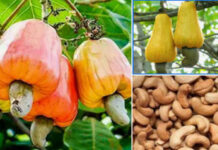Work done by commodity price monitoring and agricultural research firm, Esoko has revealed that the gains chalked with the implementation of the Planting for Food and Jobs (PFJ) were swept away by the age-old agriculture challenge, Post-Harvest-Loses (PHL).
According to Esoko, for the five years, the government initiative has been implemented, about half of the produce goes waste due to the government’s inability to process or store them. This, it says, is a major contributing factor to food price hikes on the market in recent times.
Content Manager at Esoko, Francis Danso-Adjei in an interview with the B&FT said that the PFJ can be said to be a success but the neglect of other players in the agriculture value chain has nullified its effect on the prices of food on the market.
“If you check Planting for Food and Jobs, they are subsidizing inputs, sometimes the issue is not with the production but with post-production. Last year amidst COVID, we harvested a good amount of food but what happened to the harvest? The cyclical problem of post-harvest losses took all the gains away.
We have been giving farmers incentives to produce for 5-6 years, they have been producing but at the end of the day, half of what they produce goes waste, we do nothing to it, we are not integrating it with the industries. When you check production figures, you will realize that the numbers are rising but along the chain, the others are not getting what they need.”
Buffer Stock
He said the government needs to invest hugely in storage and ensure the expansion of its buffer stock facilities across the country if it is serious about leveraging PFJ to guarantee moderate food prices for a reasonably fair period.
“The nation has not paid much attention to post-harvest systems. We harvest in August, September, and October but by November almost all the commodities we harvested in August cannot be found on the market even though we were not able to consume them all; many of them go to waste.
As a nation we need to take a critical look at the chain and give more attention to the processing and storing of food, it would go a long way to help keep the prices of food commodities on the market stable. Proper warehouses are needed for storage and in the period of shortages, you release them gradually to help keep food prices stable,” he said.
Food security dialogue
He wants a national dialogue on food security to be held, and all players in the value chain are allowed to express their views as to how it can be achieved.
“What are our buffer stocks as a nation? Can we go a whole year without planting, and we will still survive? These are the discussions that are needed now. Finance institutions and technical people need to put their heads together and come up with the best ways to ensure food security. If people are hungry, it would cause chaos and reduce productivity,” he noted.
PHL Data
The nation is said to lose more than one-tenth of its top four bowls of cereal produce to post-harvest losses (PHL) every year due to impediments along the entire value chain. In 2014, the combined losses in rice, maize, millet, and sorghum from the point of harvest to their retail/wholesale points at market centers were estimated at 337,932 tonnes – enough to feed almost one million Ghanaians, according to data on PHL sourced from research publications.
The data is compiled by the Africa Post-Harvest Losses Information System (APHLIS), a private sector initiative that gathers conservative data on PHL in the sub-region from peer-reviewed journals for dissemination. For 2018, the APHLIS data showed that Ghana’s losses from the four bowls of cereal were valued at around US$141.12 million – more than GH¢680.19 million, using that year’s average exchange rate of US$1 to GH¢4.82.








